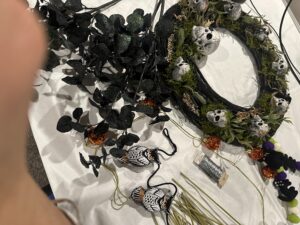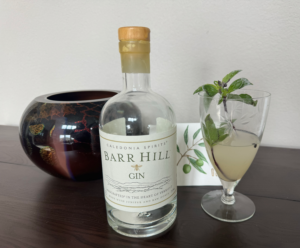What’s new in the garden this week?
Let me begin by letting you all know I’m super excited for the start of Fall Garden Season!!! Can we give a great big YAY for more veggies and flowers coming our way this second spring?
This past week I picked up two tomato transplants at our local grocery store. They offer a pretty good selection for the garden and there were two varieties calling my name. The first one is called Red Snapper. This looks to be a bush type tomato with large fruits which produce over an extended period of time. Of course the second is the Sweet 100 vining cherry type tomato. The indeterminate tomato will continue to grow reportedly until 32 degrees Farenheit which may be December 1st or later. It feels great to plan and plant again.
We were lucky enough to find a Hen and Chicks variety named “Lemon Waves” ppaf. This is a little monocarpic succulent that Jeff discussed during podcast 25. It looks like the coloration will be a lemony yellow with an orangish center to the leaves and is a full sun plant that grows to a diminutive height of 2 inches. I think “Lemon Waves” could be a charming ground cover in areas where we don’t walk around.
Now, the last succulent we found while we melted under the August sunshine is a Kalanchoe named “Flapjack”. What a gorgeous specimen. This darling is also a full sun succulent with complimentary coloration for the Hen and Chicks. We have found Kalanchoe to be sturdy plant that needs protection during the winter but our Hen and Chicks may be able to stay out all year.
Well that was some exciting finds last week and I am settling in with my planning graph tomorrow to choose the next round of seeds and transplants going in the ground. So how do we pick a garden bed that suits our needs? Let’s talk about it.
What sort of garden defining plan will you choose?
Here is a look at three examples of growing plants you may decide fit into your style. First is the direct in-ground bed. Second is to use a bounding material and raise the level of medium up and form a raised bed garden. Last, containers may be a superb choice for your needs. Each choice has advantages and disadvantages associated with it. Now let me say up front many gardeners (me included) have a mixture of the three and use each where we can highlight their advantages.
In-ground Beds
An in-ground bed can theoretically offer up front costs to get started. I love growing in-ground because there is quality access to soil micro-organisms and, in my opinion, water usage is less. I’m also aware that we have amended our soil over several years and developed structure that will hold onto water efficiently. In-ground offers the ability to tuck unusual shapes into nooks and crannies. It also means the plant roots will be able to mine the minerals earth provides in abundance. You have the ability to mound up the in-ground bed to manage water drainage which may also encourage the soil to warm up a bit earlier in the year for colder climates. This type of garden bed wins my choice for trees, shrubs and perennials.
Now there are challenges. Pets and critters will have access easily unless blocked. We resorted to a smaller fencing arrangement that so far has kept the dogs from eating my fertilizer and digging to their hearts delight. You may incur costs from adding amendments such as compost or topsoil that you haul in. We originally brought in about 25 cubic yards of good garden soil so we could actually plant on top of our rocky surface. I personally would use a cardboard blocking layer and heap compost on top to create my beds. Hey! That is actually what we did and it has worked well all these years. You also need to think about how you will care for the garden. Kneeling and bending and leaning can be physically challenging. We are increasingly reducing our labor by using ground covers to choke out much of the grasses and weedy plants we don’t want.
Now we look at the raised beds.
Raised Bed Gardens
For our discussion let’s call a raised bed soil that is confined by some structure. I can’t dive in to define the exact material in this post but may think about having a post around this topic later. These beds in my mind also have direct contact with the soil through the opening on the bottom of the bed.
Raised beds appeal to many gardeners for their well defined structure. Each bed may be placed in a pattern and added to bit by bit over time. I have worked with beds as shallow as 8 inches and as deep as 24 inches. So one advantage is the decorative effect in the garden.
I tend to like a bed about 15 inches or higher because they are easy to work in while seated on an upturned bucket. The weeds are plucked out because they are easy to see and get to. The height takes care of a lot of the bending and kneeling once you get them installed. I like being able to view my plants up close which makes them more enjoyable.
You have the full choice of how you will fill your beds. I tend to use a layering system of tree trimmings and branches in the bottom. Next I use garden trimmings layered with compost, vermiculite, bagged potting mix, leaf mold and worm castings and in large beds I like to include garden soil as well. Root veggies tend to really like the loose mix and grow well.
I do lean into a nice raised bed but I’m aware that they can require more water than the in-ground option. I use some strategies to combat this by mulching heavily and using some form of Olla to provide water. Raised beds also require regular top ups of the compost mix as the soil level decreases. This is a big caution, they are pretty permanent due to the labor involved in moving them so rely on your plan if you choose to try out a raised bed.
Finally we get to containers.
Container Gardens
I truly love a good container! I’m talking here of something that will hold the soil mix, provide appropriate drainage and block the potting mix from interacting with the topsoil.
You will find containers in all sizes and made from a huge variety of materials. Having the container separated from the soil can provide protection in case of contaminated ground. I do recommend getting soil tests to find out what you will be growing on during the planning phase of your project.
Containers can grow plants all the way up to trees if you provide appropriate space for your plant roots. I aim currently delighted by large containers on wheels that could grow so many things.
Even though they are very enticing, containers have a few challenges to be aware of. For one thing they will dry out quickly in hot weather and need to be monitored each day. If it is constructed of metal it could fry your plant roots during a hot summer afternoon. You should pay attention to the potting mix and try to match it with the plant you want to grow. This is important for correct watering and feeding of each plant. Though they are quite moveable the larger the container size the heavier it will be. Take care when placing the container on a deck, balcony, roof or other structure.
These are a few considerations for this portion of the planning process. It talks to the wide choices we have as gardeners today and I feel there is a great fit for each of us to be successful and enjoy growing our favorite plants.
Happy Gardening Everyone!






